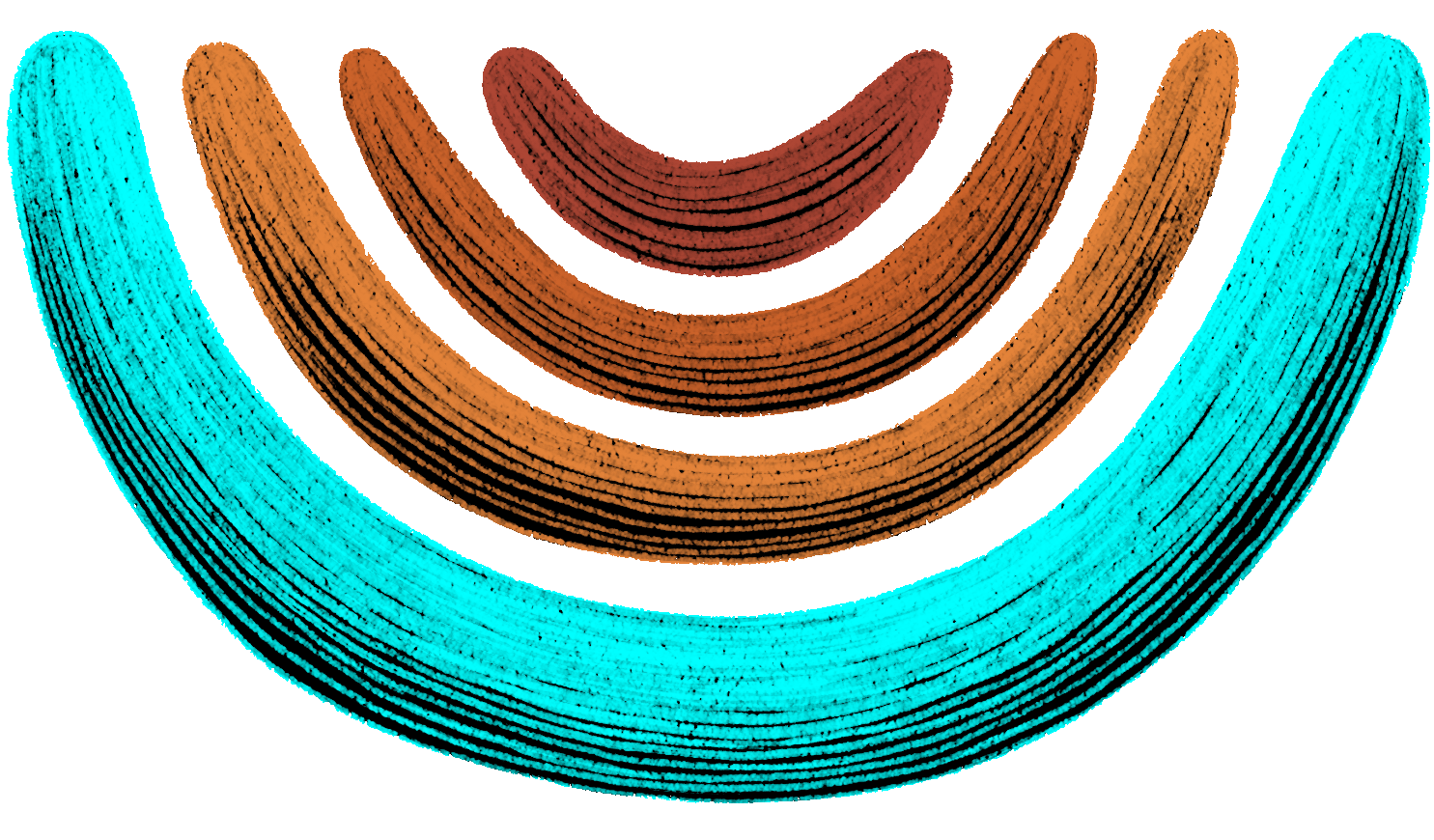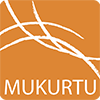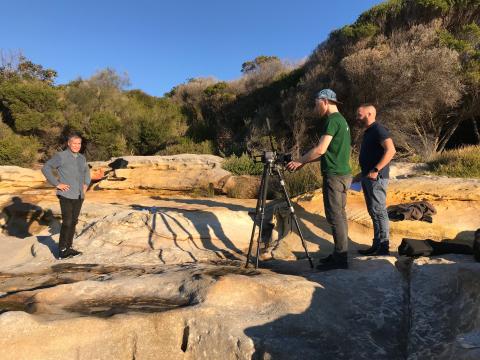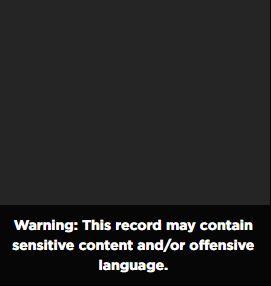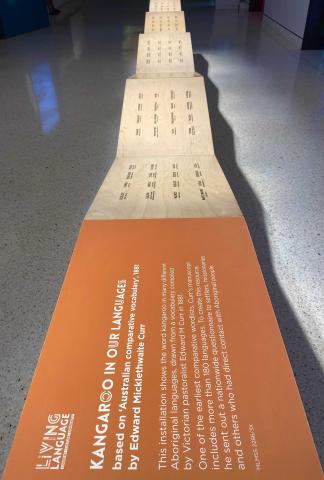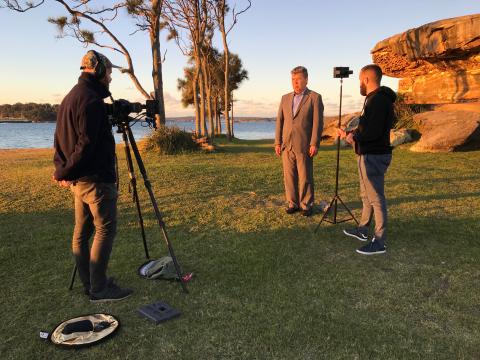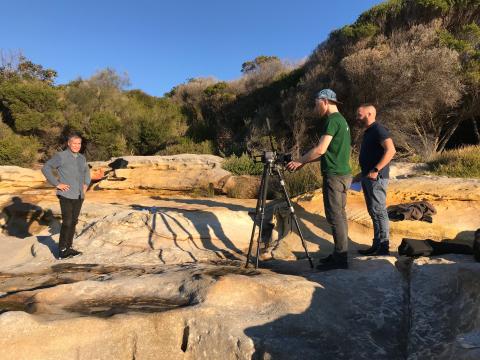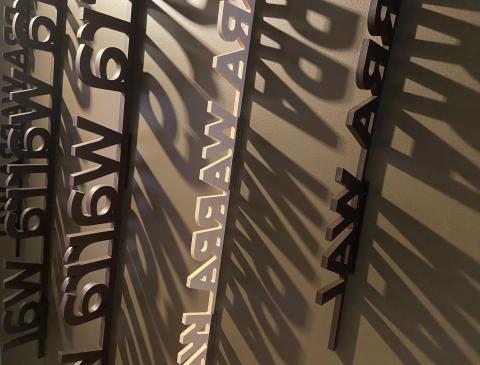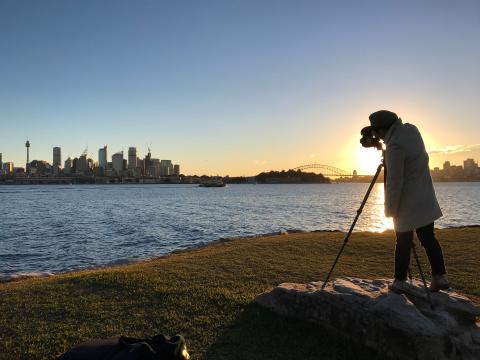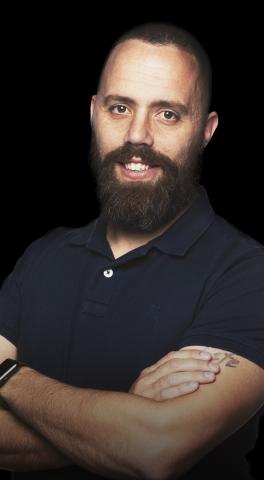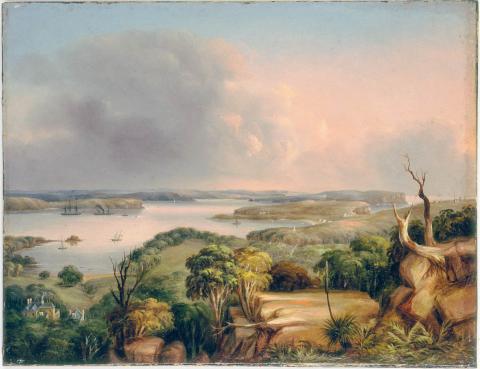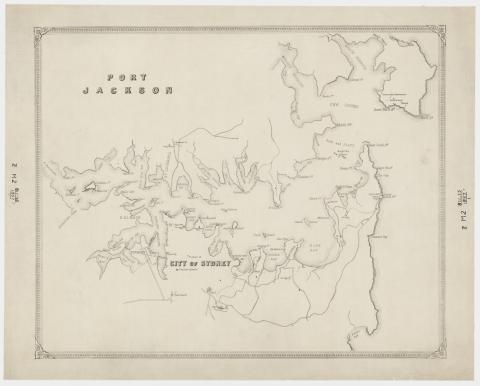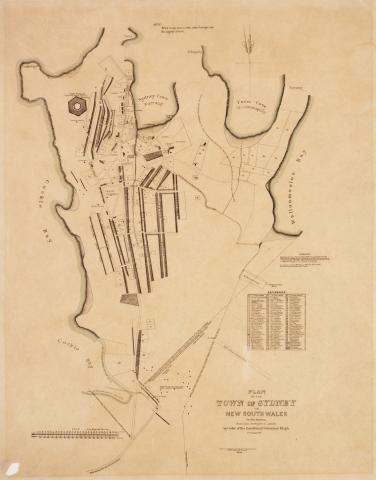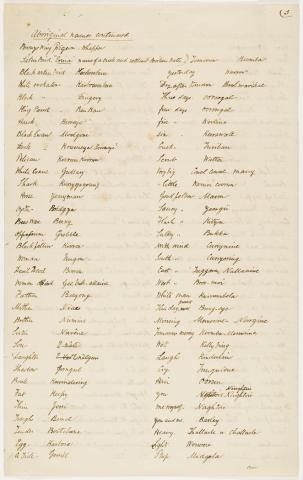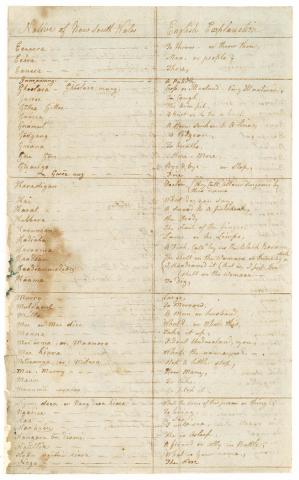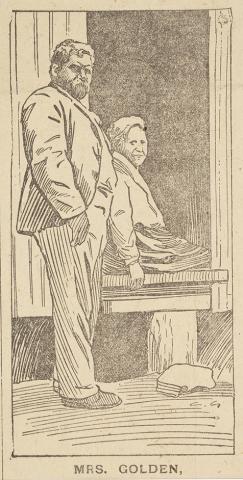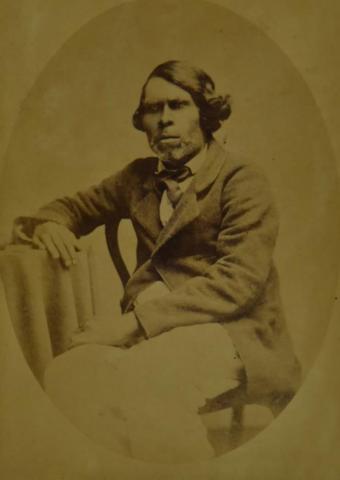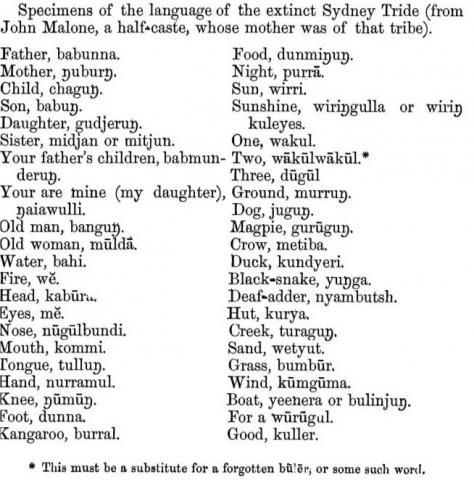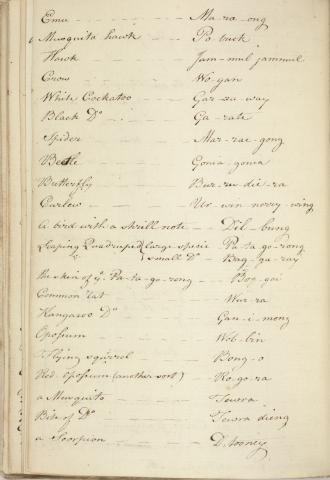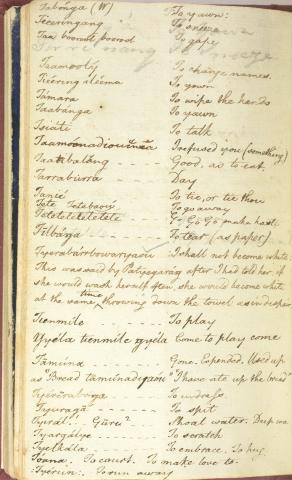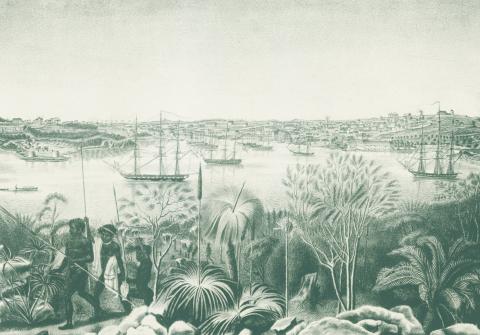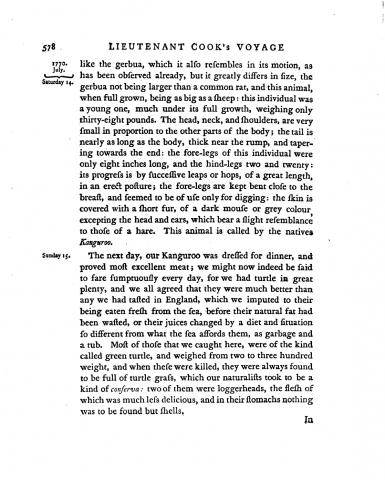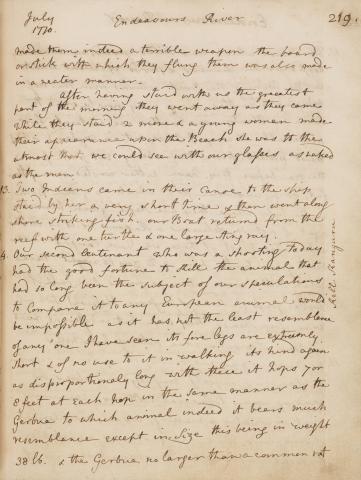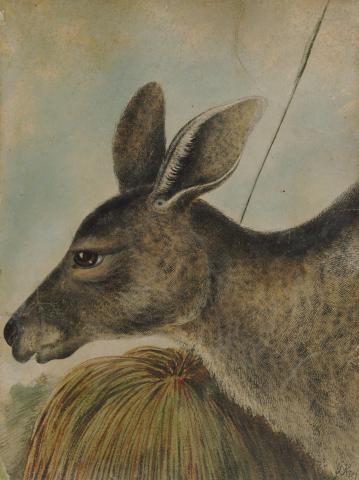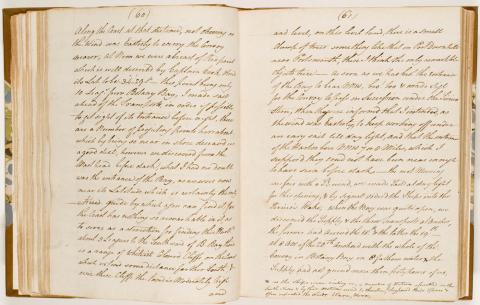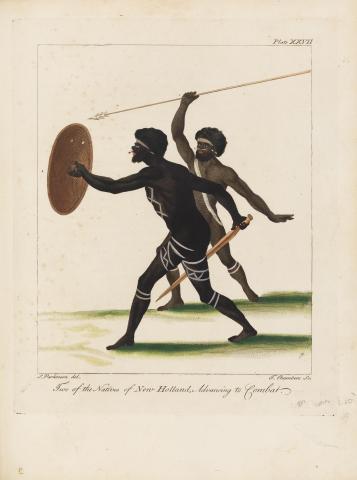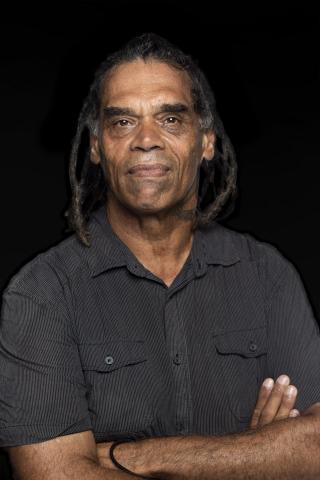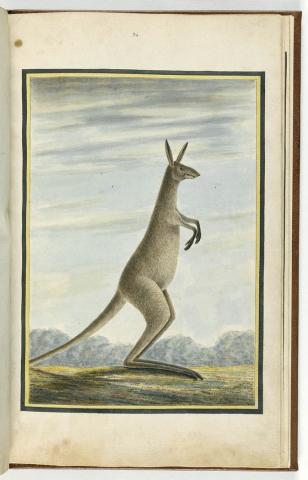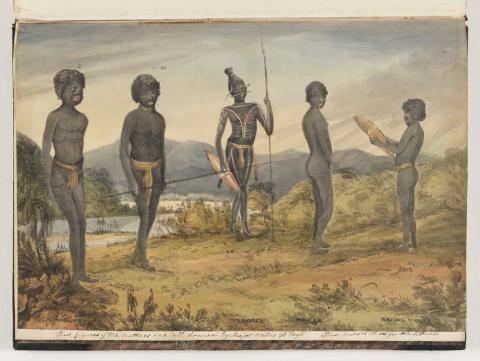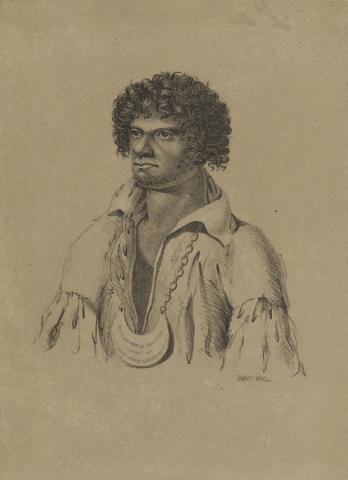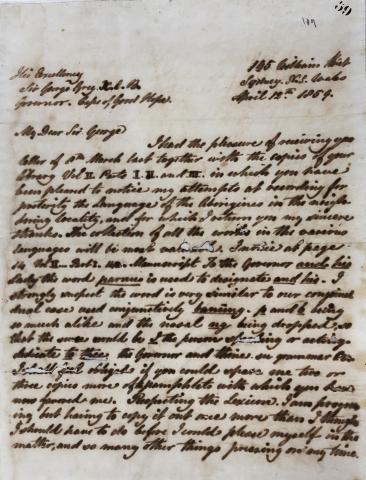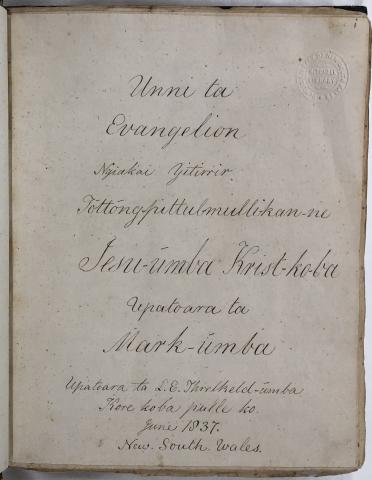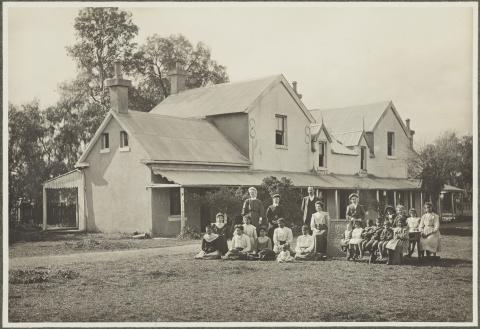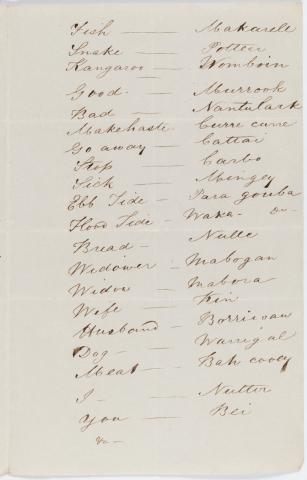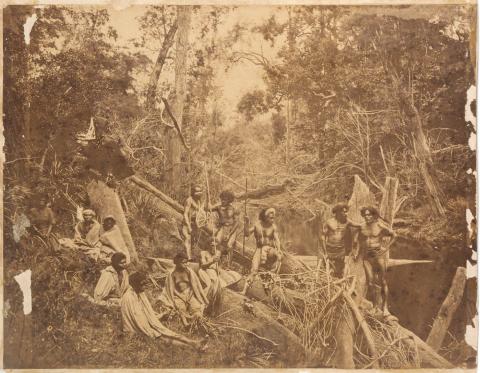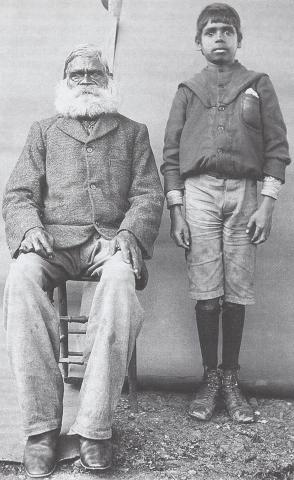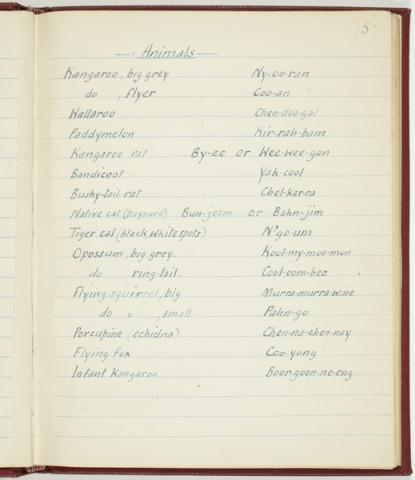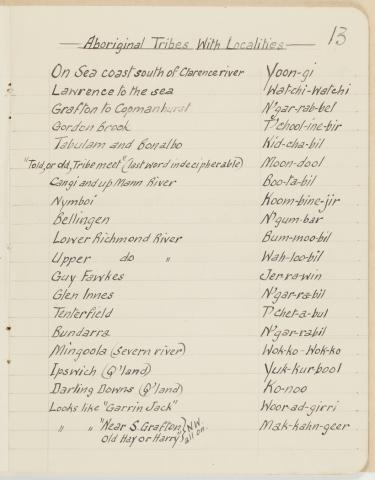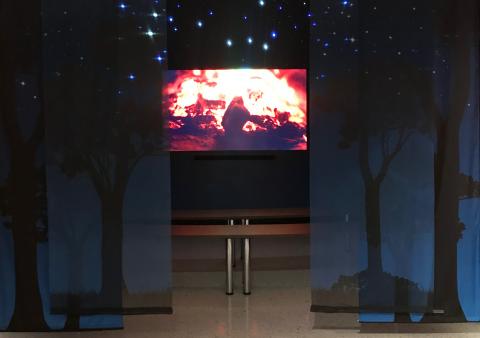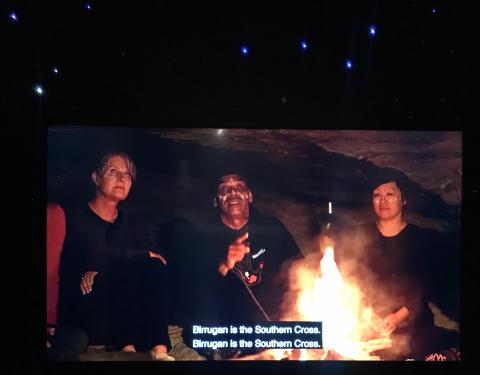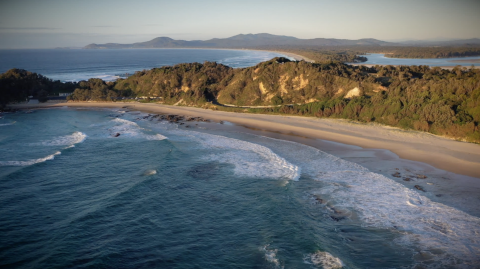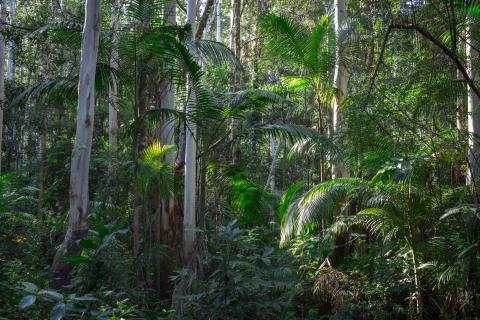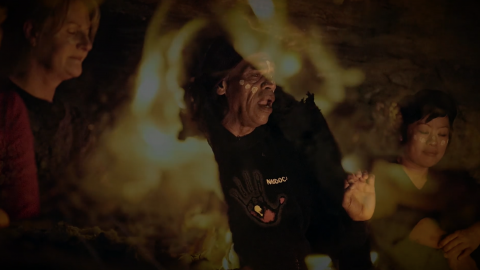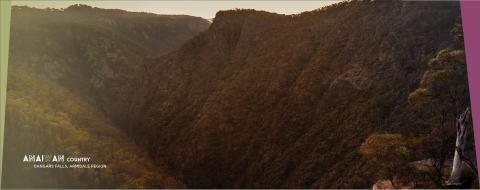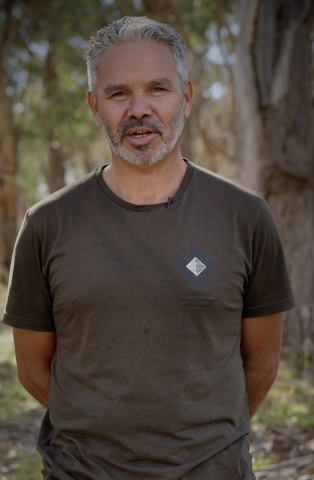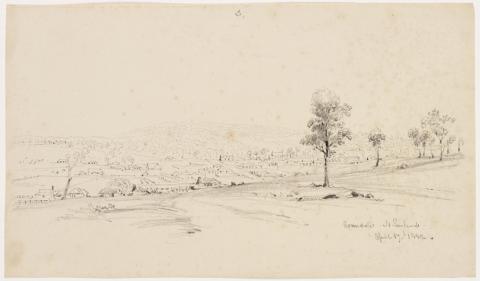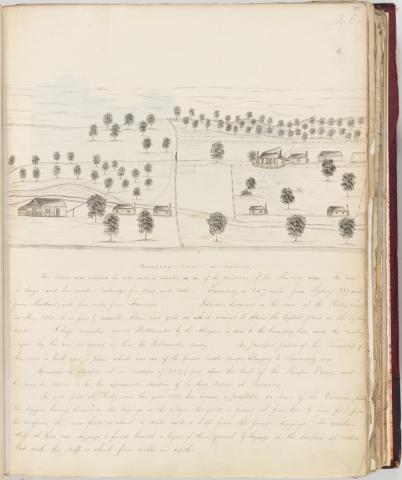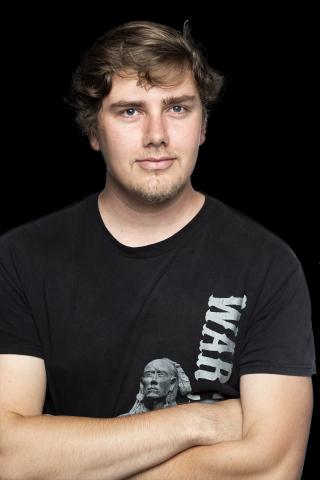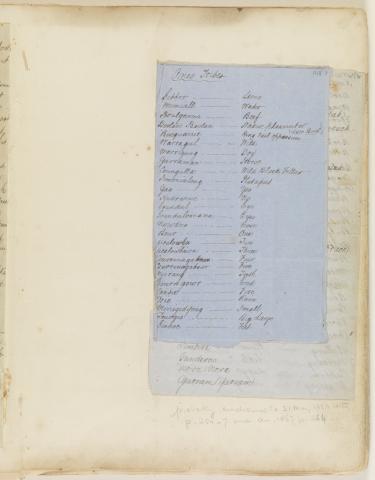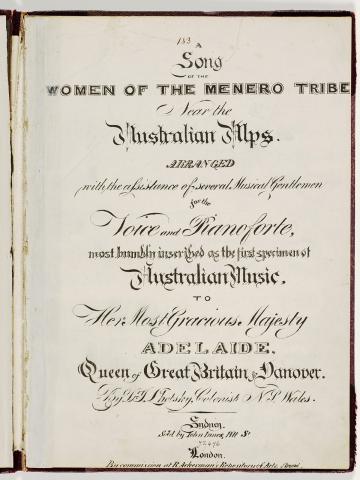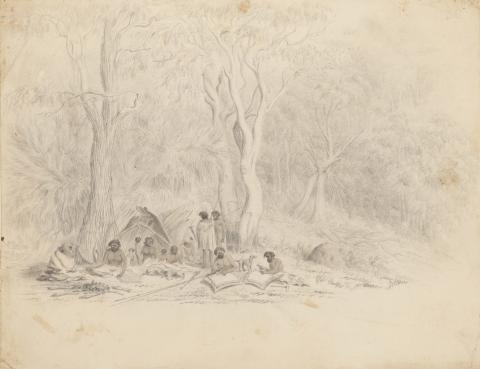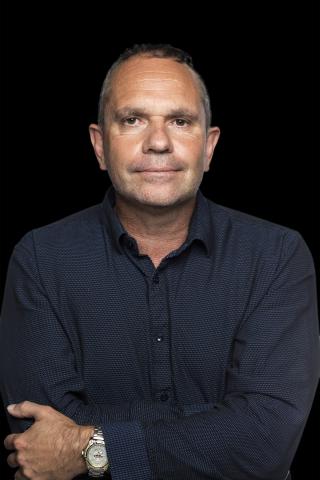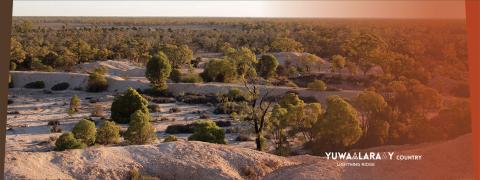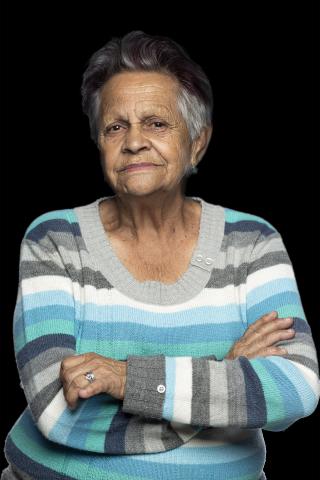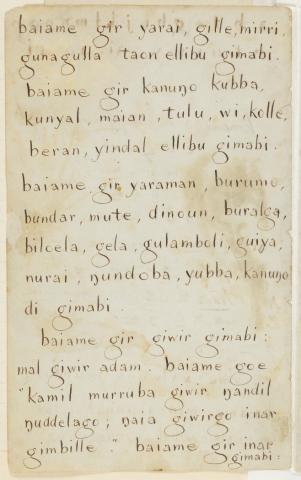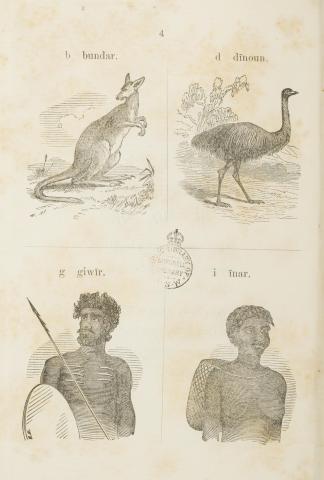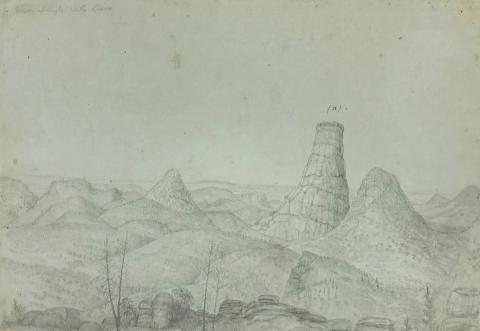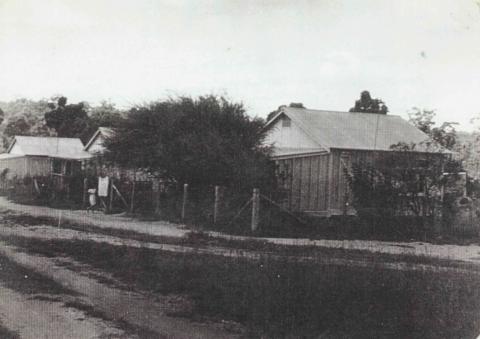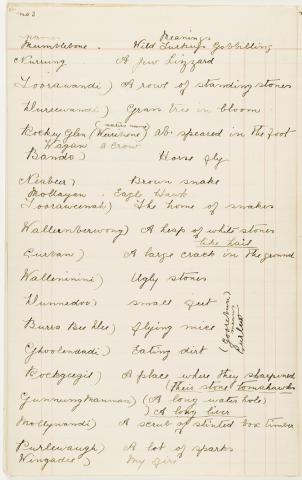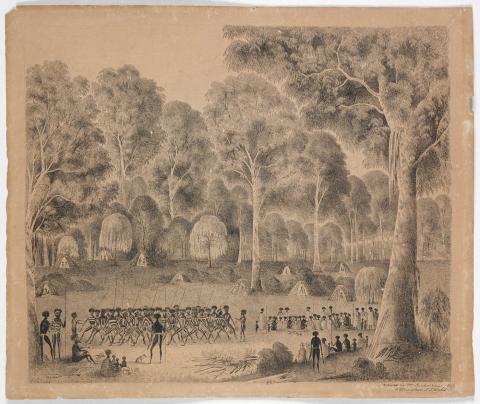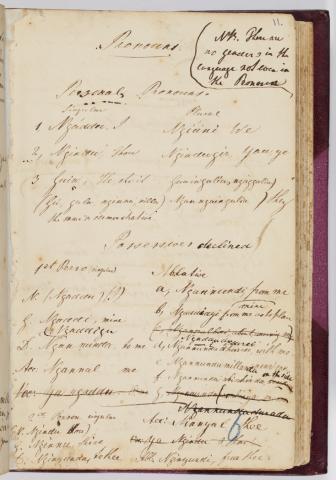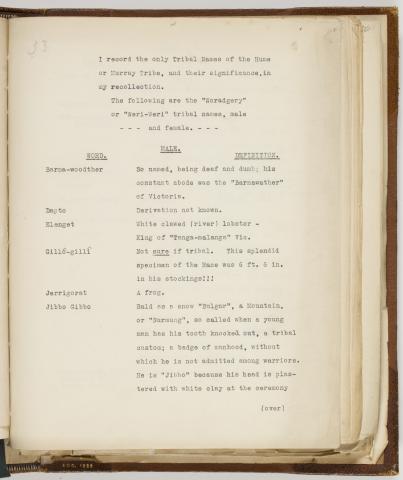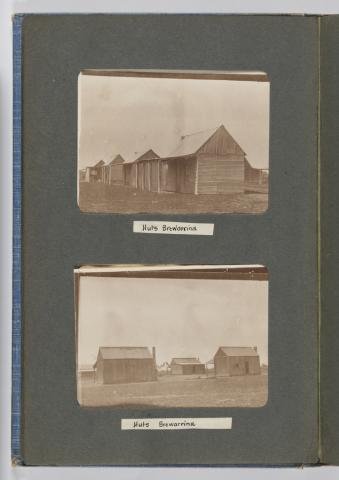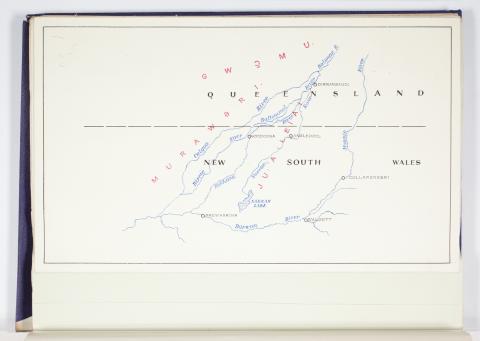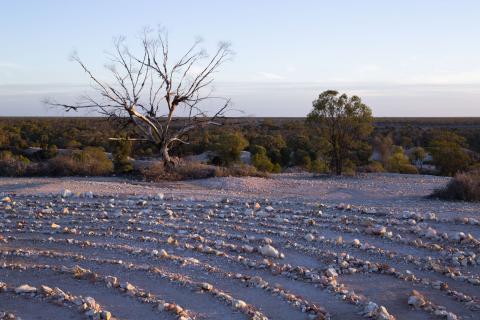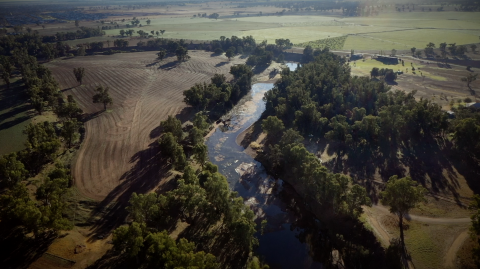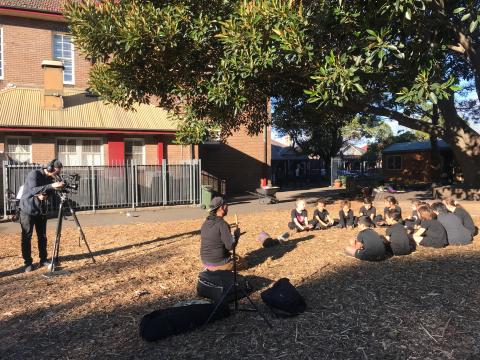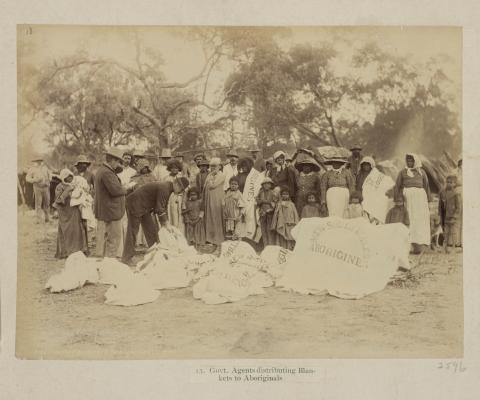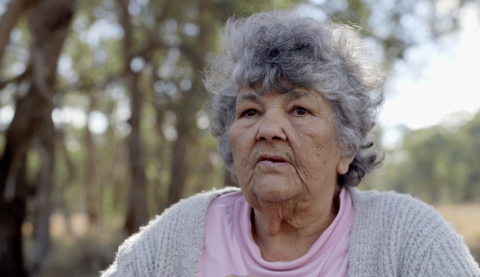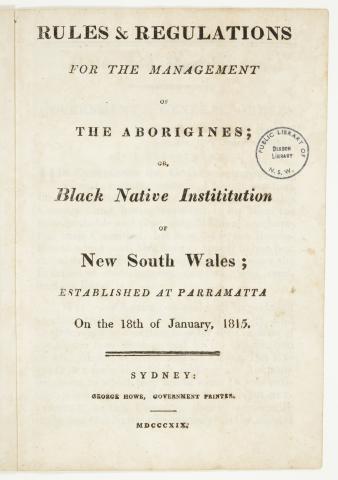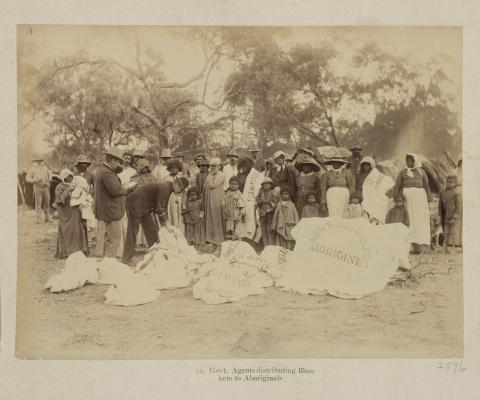'Living Language: Country, Culture, Community' exhibition
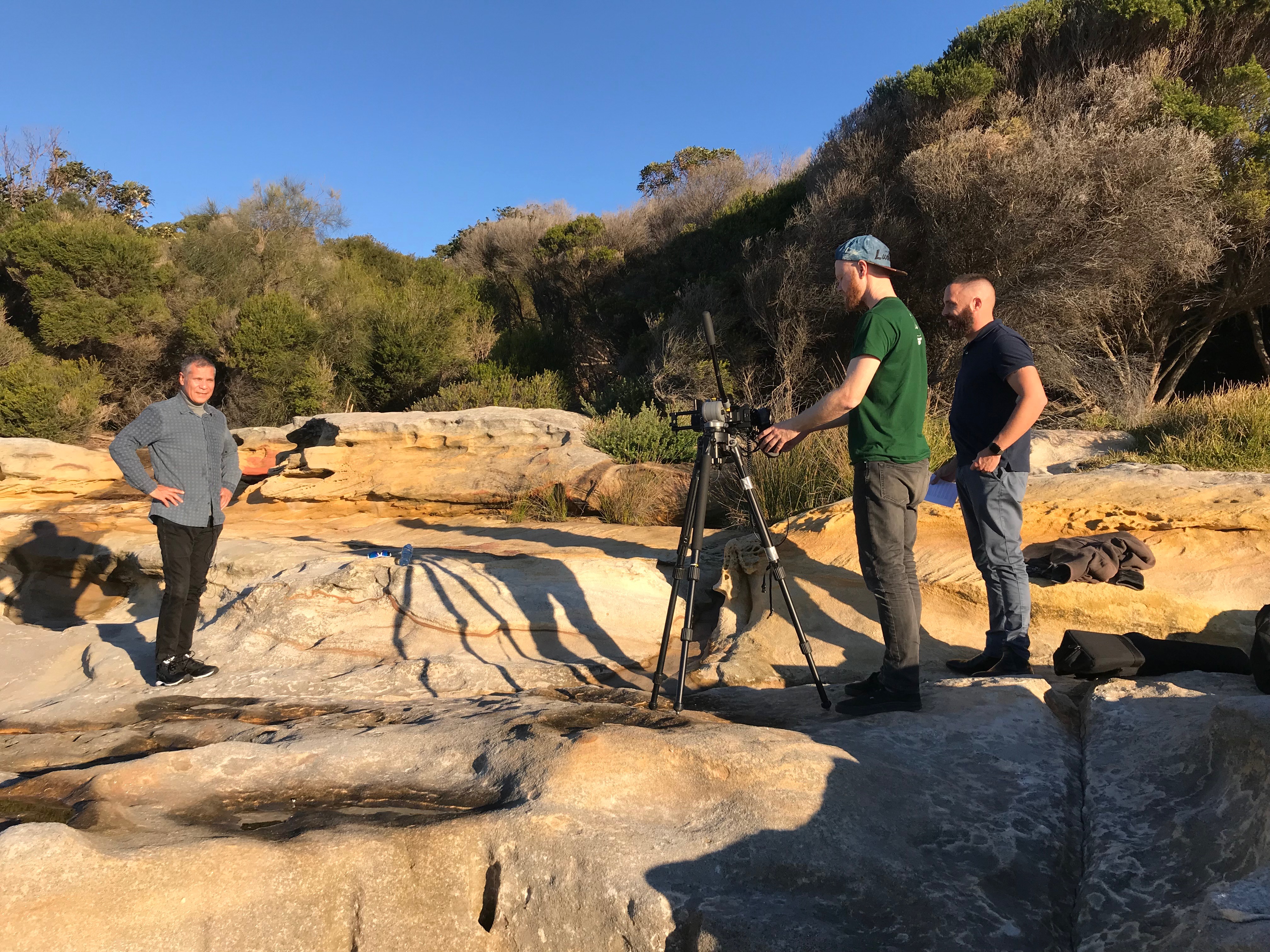
A State Library of NSW exhibition which celebrates the resilience of NSW Aboriginal languages.
Community:
State Library of NSWCategory:
LanguagesSummary:
Living Language has been guided by a reference group of Elders, leaders and language custodians representing nine communities from across NSW and the ACT.Community:
State Library of NSWCategory:
LanguagesSummary:
This exhibition explores the topics of first contact, punishment for using language, language loss, and the Stolen Generations, and features the names and images of people who are now deceased. Community:
State Library of NSWCategory:
Country & Culture, LanguagesSummary:
'Australian comparative vocabulary' collected by Edward Micklethwaite Curr. Community:
State Library of NSWCategory:
Country & Culture, LanguagesSummary:
Each word for ‘kangaroo’ in more than 180 Australian languages was extracted from the original hand-written version of Curr’s compendium of Aboriginal languages. Community:
State Library of NSWCategory:
Country & Culture, LanguagesSummary:
Uncle Lloyd Walker welcomes people to Coastal Sydney and to the 'Living Language' exhibition.Community:
State Library of NSWCategory:
Country & Culture, LanguagesSummary:
Dr Shayne Williams, Senior Knowledge Holder (Gweagal Clan of the Dharawal Nation) Kurnell, June 2019.Community:
State Library of NSWCategory:
Country & Culture, LanguagesSummary:
Dharawal language heard upon entry to exhibitionCommunity:
State Library of NSWCategory:
Country & Culture, LanguagesSummary:
Sydney CBD (Gadigal country) from Clark Island; Gamay (Botany Bay).2 pages
Community:
State Library of NSWCategory:
Country & Culture, LanguagesSummary:
Raymond Ingrey (Dharawal, La Perouse) talks about teaching Dharawal in his community.Community:
State Library of NSWCategory:
Country & Culture, LanguagesSummary:
This painting represents the view east from the Library, towards Car-rang-gel or Garangal (North Head) and Ta-ral-be or Daralbi (South Head).Community:
State Library of NSWCategory:
Country & Culture, LanguagesSummary:
Map of Port Jackson and the town of Sydney, ca. 1857.Community:
State Library of NSWCategory:
Country & Culture, LanguagesSummary:
This early map of Sydney demonstrates Aboriginal custodianship through the original names for some of the local landmarks. Community:
State Library of NSWCategory:
Country & Culture, LanguagesSummary:
List of Aboriginal names and words recorded from the Cammeray community between 1884 and 1907. Community:
State Library of NSWCategory:
LanguagesSummary:
The well-known Aboriginal figure Bennelong is named in a letter from First Fleet naval officer David Blackburn. Community:
State Library of NSWCategory:
LanguagesSummary:
Evening News supplement, 17 November 1900, p 3.Community:
State Library of NSWCategory:
Country & Culture, LanguagesSummary:
Photo of linguists and ethnologists Johnny Malone, 1850-1875. Community:
State Library of NSWCategory:
Country & Culture, LanguagesSummary:
This map shows that Dharawal people have been living in and around Gamay (Botany Bay) for tens of thousands of years. Community:
State Library of NSWCategory:
Country & Culture, LanguagesSummary:
Samples of sentences and stories in the Sydney language, provided by Johnny and Lizzie to anthropologists. Community:
State Library of NSWCategory:
Country & Culture, LanguagesSummary:
Early linguists and ethnologists sought out John (Johnny) Malone (c 1820–1880) and his wife Lizzie (c 1830–1901), later Golden, as language and cultural knowledge holders. Community:
State Library of NSWCategory:
Country & Culture, Languages, Arts, Objects & TechnologySummary:
Bungaree, a Kuringgai man from what is now known as the Broken Bay area of New South Wales, is thought to have shared some of his people’s vocabulary with William Dawes.Community:
State Library of NSWCategory:
Country & Culture, LanguagesSummary:
This notebook shows recordings of Sydney language, in the neighbourhood of Sydney, 1788-1791.Community:
State Library of NSWCategory:
Country & Culture, LanguagesSummary:
This manuscript includes words and short phrases recorded from a young woman named Patyegarang, who helped him to understand her people’s language. Community:
State Library of NSWCategory:
Country & Culture, LanguagesSummary:
This record of the first Russian expedition to the Antarctic includes a lithographic print of the view from Kiarabilli (Kirribilli) on the north shore of Warran (Sydney Cove). It shows Tar-ra (Dawes Point) on the southern shore at the far right. Community:
State Library of NSWCategory:
Country & Culture, LanguagesSummary:
Coastal Sydney - an account of the voyages undertaken by the order of His present Majesty, 1773.Community:
State Library of NSWCategory:
Country & Culture, LanguagesSummary:
Record of the interactions of James Cook’s ship with the Guugu Yimidhirr people.Community:
State Library of NSWCategory:
Country & Culture, LanguagesSummary:
Record of the many different Aboriginal names used to name 'kangaroo', ca. 1857. Community:
State Library of NSWCategory:
Country & Culture, LanguagesSummary:
Coastal Sydney: Journal kept on board the Sirius during a voyage to New South Wales, 1787-91.Community:
State Library of NSWCategory:
Country & Culture, LanguagesSummary:
On 28 April 1770 two Gweagal men stood their ground to defend their Country when Lieutenant James Cook and an armed party of marines landed on shore at Gamay (Botany Bay). 2 pages
Community:
State Library of NSWCategory:
Country & Culture, LanguagesSummary:
Michael Jarrett (Gumbaynggirr, Nambucca Heads) does a traditional welcomeCommunity:
State Library of NSWCategory:
Country & Culture, LanguagesSummary:
Select specimens from nature … by Thomas Skottowe, drawings by TR Browne, 1813Community:
State Library of NSWCategory:
Country & Culture, LanguagesSummary:
These Awabakal men were painted in 1818 by Major James Wallis, the Commandant at Newcastle. Community:
State Library of NSWCategory:
Country & Culture, LanguagesSummary:
Beerabahn (Biraban) was born into a traditional Awabakal way of life at Bahtahbah (Belmont, New South Wales). Community:
State Library of NSWCategory:
Country & Culture, LanguagesSummary:
Reverend Threlkeld was determined to share the knowledge he had gained in his time living with the Awabakal people. Community:
State Library of NSWCategory:
Country & Culture, LanguagesSummary:
Some of the Awabakal language is preserved Horatio Hale’s notebook. Lent by Western Libraries, Western University, London, CanadaCommunity:
State Library of NSWCategory:
Country & Culture, LanguagesSummary:
The Awabakal leader Beerabahn (Biraban) taught Threlkeld to speak his language. Threlkeld used this knowledge to write and publish several religious works and vocabularies.Community:
State Library of NSWCategory:
Country & Culture, LanguagesSummary:
The Aboriginal Children’s Home at Singleton — on the Hunter River in Wonnaruah country, inland from Lake Macquarie — was established by the Aborigines Inland Mission in 1910 and abandoned in 1920. Community:
State Library of NSWCategory:
Country & Culture, LanguagesSummary:
The people to the north of Awabakal country speak Warrimay, a Gathang dialect. Community:
State Library of NSWCategory:
Country & Culture, LanguagesSummary:
Bundjalung people are seen in these photographs with the objects they used in their daily lives. Community:
State Library of NSWCategory:
Country & Culture, LanguagesSummary:
Bundjalung Elder Billy Buchan was employed as a stockman by the Hewitt family at Newton Boyd Station from the 1850s. Community:
State Library of NSWCategory:
Country & Culture, LanguagesCommunity:
State Library of NSWCategory:
Country & Culture, LanguagesCommunity:
State Library of NSWCategory:
Country & Culture, LanguagesSummary:
Video of a campfire in a cave on Valla Beach near Nambucca Heads2 pages
Community:
State Library of NSWCategory:
Country & Culture, LanguagesSummary:
Michael Jarrett (Gumbaynggirr) shares his knowledge about Dhanggati, Ngambaa, Ngaku and Gumbaynggirr countriesCommunity:
State Library of NSWCategory:
Country & Culture, LanguagesSummary:
Michael Jarrett (Gumbaynggirr) tells the story of Birrugan (Southern Cross) in a cave on Valla Beach near Nambucca HeadsCommunity:
State Library of NSWCategory:
Country & Culture, LanguagesCommunity:
State Library of NSWCategory:
Country & Culture, Languages2 pages
Community:
State Library of NSWCategory:
Country & Culture, LanguagesSummary:
Michael Jarrett (Gumbaynggirr) sings the Wuuban (Bloodwood) tree song around a campfire in a cave on Valla Beach near Nambucca Heads2 pages
Community:
State Library of NSWCategory:
Country & Culture, LanguagesSummary:
Dave Widders (Anaiwan, New England Range) filmed at Inglebah Reserve, May 2019Community:
State Library of NSWCategory:
Country & Culture, LanguagesSummary:
Anaiwan countryCommunity:
State Library of NSWCategory:
Country & Culture, LanguagesSummary:
This station was occupied in 1835 and is situated on one of the tributaries of the Macleay river 2 pages
Community:
State Library of NSWCategory:
Country & Culture, LanguagesSummary:
Callum Clayton-Dixon (Ambēyang, Armidale) talks about teaching Anaiwan language using the Accelerated Second Language Acquisition techniqueCommunity:
State Library of NSWCategory:
Country & Culture, LanguagesCommunity:
State Library of NSWCategory:
Country & Culture, LanguagesSummary:
Ngarigu words collected by John H Pettit in 'Letters home to England'Community:
State Library of NSWCategory:
Country & Culture, LanguagesSummary:
European explorer John Lhotsky wrote in his journal that he had ‘notated a song which he heard at a corroboree’ although his musical score bears little similarity with Aboriginal musical traditions.Community:
State Library of NSWCategory:
Country & Culture, LanguagesSummary:
in ‘Sketches in Australia and the South Seas’, 1842–522 pages
Community:
State Library of NSWCategory:
Country & Culture, LanguagesSummary:
‘out of the water came a monstrous thing …’Community:
State Library of NSWCategory:
Country & Culture, LanguagesSummary:
Sung by Don Bell, Ngunawal Elder2 pages
Community:
State Library of NSWCategory:
Mob, Country & Culture, LanguagesSummary:
Auntie Maureen Sulter (Gamilaraay, Coonabarabran) in Warrumbungle National ParkCommunity:
State Library of NSWCategory:
Country & Culture, LanguagesSummary:
He began to study Aboriginal languages and, while on a preaching tour of the Liverpool Plains, took a special interest in Gamilaraay (Kamilaroi)Community:
State Library of NSWCategory:
Country & Culture, LanguagesSummary:
Gamilaraay language scripture lessons were published by Reverend William Ridley as Gurre Kamilaroi, or Kamilaroi Sayings in 1855Community:
State Library of NSWCategory:
Country & Culture, LanguagesCommunity:
State Library of NSWCategory:
Mob, Country & Culture, LanguagesSummary:
Reminiscences on Mary Jane Cain and life on Burra Bee Dee Mission by Aunty Maureen Sulter (Gamilaraay, Coonabarabran). Community:
State Library of NSWCategory:
Mob, Country & Culture, LanguagesSummary:
In the 1920s, Mary Jane wrote a local history documenting her early life in the Coonabarabran region. Her reminiscences include 73 Gamilaraay placenames and their meanings in English.Community:
State Library of NSWCategory:
Country & Culture, LanguagesSummary:
This drawing depicts a campfire corroboree of Wiradjuri people, observed by two Europeans who are sitting in the foreground. Community:
State Library of NSWCategory:
Country & Culture, LanguagesSummary:
This manuscript of the Wiradjuri language is as comprehensive as a modern dictionary. Community:
State Library of NSWCategory:
Country & Culture, LanguagesSummary:
As a child, John Mitchell mixed with the Wiradjuri people of the Murray River area and acquired a knowledge of their language. Community:
State Library of NSWCategory:
Country & Culture, LanguagesSummary:
in ‘Papers of John Francis Huon Mitchell’, 1903–23Community:
State Library of NSWCategory:
Country & Culture, LanguagesSummary:
Over the years, the mission was home to Aboriginal people from many different language and cultural backgrounds. Community:
State Library of NSWCategory:
Country & Culture, LanguagesSummary:
in 'Comparative vocabularies of three native languages', 1955Community:
State Library of NSWCategory:
Country & Culture, LanguagesSummary:
told by Rhonda Ashby (Gamilaraay/Yuwaalaraay), Lightning RidgeCommunity:
State Library of NSWCategory:
Country & Culture, Languages2 pages
Community:
State Library of NSWCategory:
Mob, Country & Culture, LanguagesSummary:
Aunty Diane McNaboe shares stories of her CountryCommunity:
State Library of NSWCategory:
Mob, Country & Culture, LanguagesSummary:
Aunty Diane McNaboe shares stories and a song about her CountryCommunity:
State Library of NSWCategory:
Mob, Country & Culture, LanguagesSummary:
Nathan Leslie (Gamilaraay, Wollongong) shares his story about teaching children Gamilaraay language at Orange Grove Public School, SydneyCommunity:
State Library of NSWCategory:
Country & Culture, LanguagesSummary:
Whether by design or for cultural reasons, Aboriginal languages have a complex system of protocols as a way to protect language, culture or people. 2 pages
Community:
State Library of NSWCategory:
Country & Culture, LanguagesSummary:
Reminiscences by Aunty Diane McNaboe (Wiradjuri, Dubbo), Aunty Maureen Sulter (Gamilaraay, Coonabarabran) and Aunty Patsy Cohen (Anaiwan, Armidale).Community:
State Library of NSWCategory:
Country & Culture, LanguagesSummary:
in ‘Rules & regulations for the management of the Aborigines, or, Black Native Institution of New South Wales, established at Parramatta, on the 18th of January, 1815’Community:
State Library of NSWCategory:
Country & Culture, Languages